|
|
|
This page is intended to document two types (I believe) of two-piece case designs Omega used in the 1970s-1980s for their Speedmaster line of wrist watches that housed the Cal. 1040/1041 and Cal. 1045 movements.
The Cal. 1040 movement was used in the Speedmaster Mark IV series. The Cal. 1041 movement was the Chronometer variant and went into the Speedmaster 125.
The Cal. 1045 movement was used in the Speedmaster Automatic Day-Date and the Speedmaster Mark V (the Mark V is not discussed here).
The Omega case design depicted on this page is unique in that the central movement puck or case can be removed from the outer shell of the watch case, as shown in the following photo of my watch, a Cal. 1045 movement in a Ref. 176.0012 case, circa 1976.
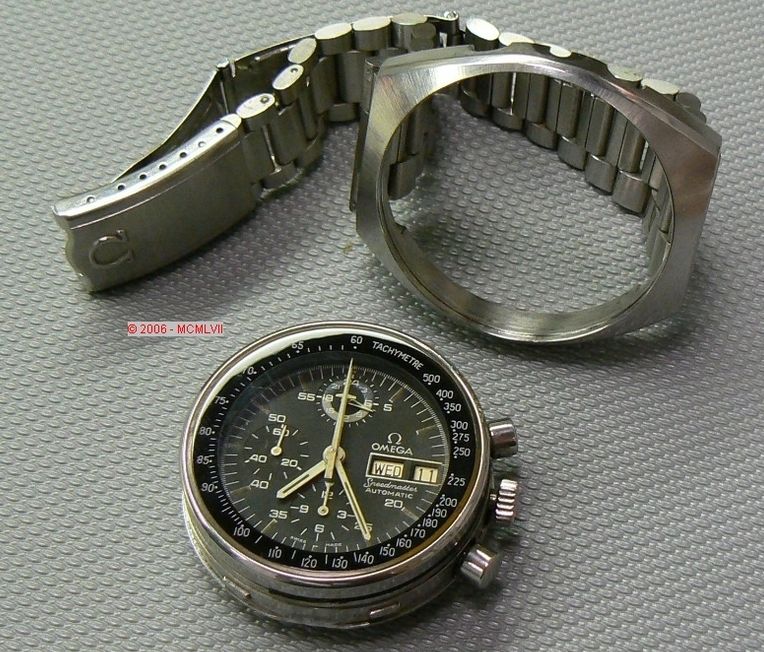
As seen in the following sketch, the puck or inner case of the watch is held into the outer shell by means of a gasket or o-ring of 37mm diameter and approximately 1mm thickness.

To remove the puck, sufficient force is applied to the dial side of the puck while restraining the outer shell to dislodge the gasket from the shell groove. The puck will then slide rearward out of the shell.
I've heard of some pucks that are determined to stay put in their shells and I don't have any good remedies for removing the pucks. As for my watch, the puck was glued in to the outer shell, as evidence of glue being present on the gasket and case surfaces when I removed the puck the first time. I later came to find out that there was good reason for the puck to be glued in on my watch, but more on this later.
Now on to some photos I found on the internet to show the difference between the earlier 1040/1041 puck and the 1045 puck. The earlier Cal. 1040/1041 movement puck has three equally spaced notches around the periphery of the rear flange.
My reasoning for this, whether or not it is correct, is that Omega needed some method of securing the puck from rotation when the screw-on case back was being installed. The later 1045 puck has lugs on the exterior sides of the puck (see photo at top, lugs can be seen at 5 and 7 o-clock, there are two more at 11 and 1) that engage the outer shell and prevent the puck from rotating in the shell when installing the case back. I'm not sure if the earlier puck design has these lugs. If it does, I'm at a loss as to why Omega put three notches in the earlier flange.
The following four photos are of various Speedmaster 125s with the 1041 movement. The notches are circled in red in all photos.
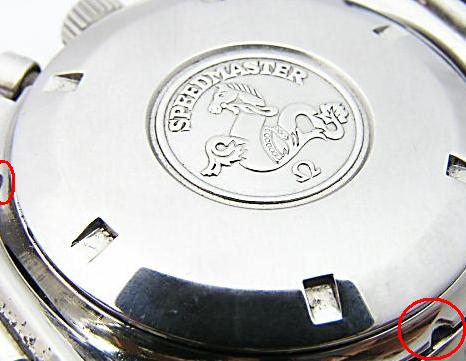
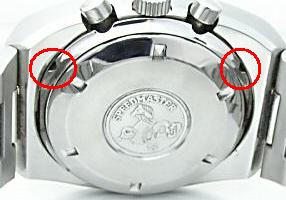
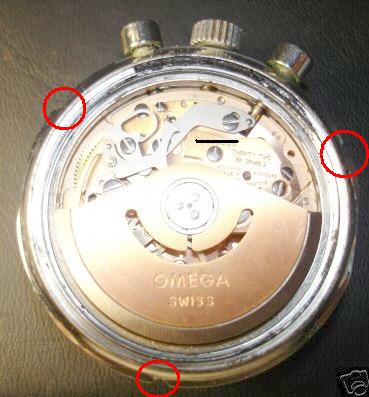
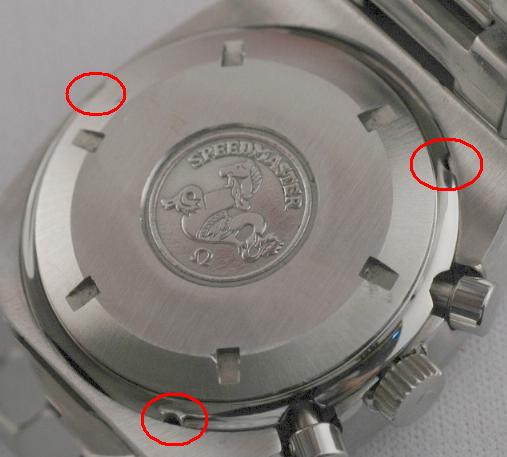
The following photo shows the three notches quite well (Speedmaster 125 again).
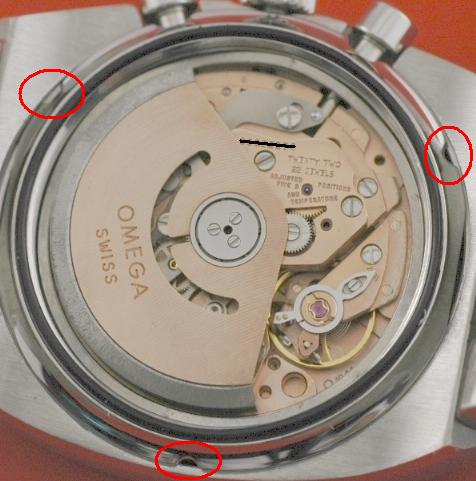
The following two photos are of MKIV cases showing the notches.
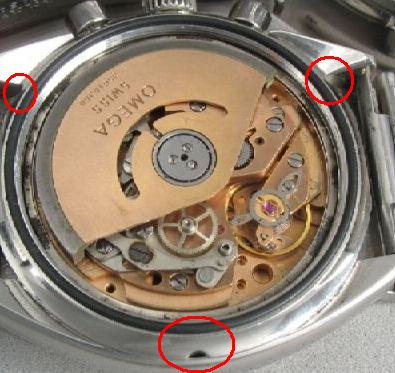
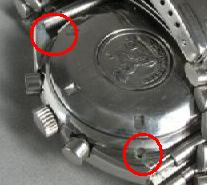
And finally, a Cal. 1045 Speedmaster with no notches (My 1045 case also has no notches). So it appears that the 1040/1041 movement puck came with notches on the rear flange but the 1045 puck did not.
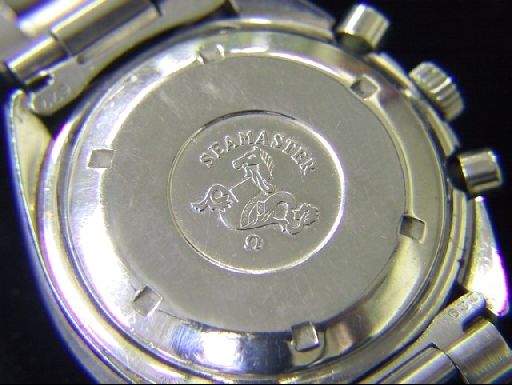
As mentioned earlier, my puck will not stay put in the outer shell with the Omega gasket installed, thus the glue applied by a previous owner or (!) watch shop. The following sketch shows my predicament. The puck gasket groove is further to the rear of the watch than the groove of the shell, so the gasket cannot engage the shell groove.

This makes me wonder if Omega changed the location of the gasket grooves between the Cal. 1040/1041 and the Cal. 1045 cases. In any event, I'll update this page if I ever figure out a way to remedy my case problem. Until then, I'll keep using Teflon tape.